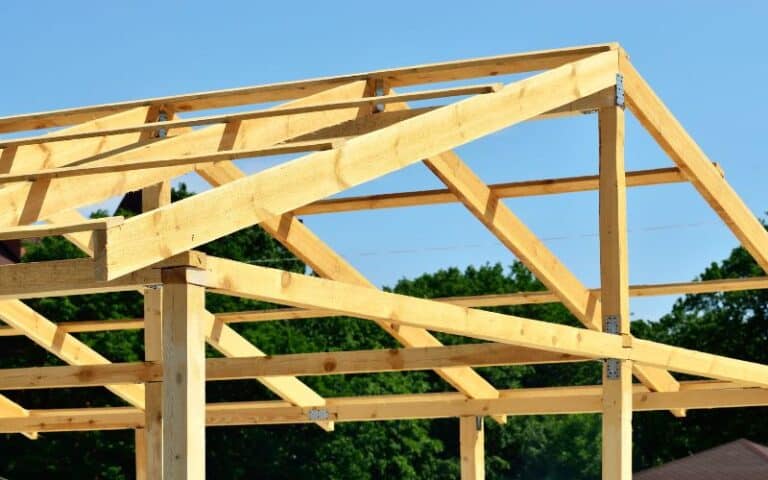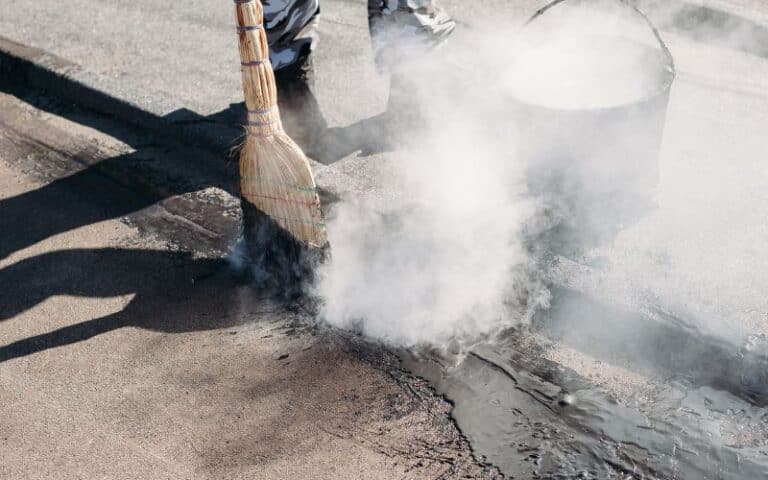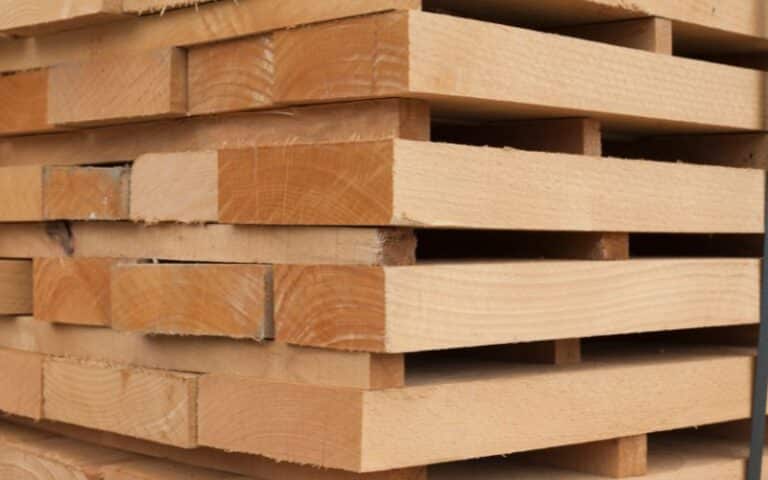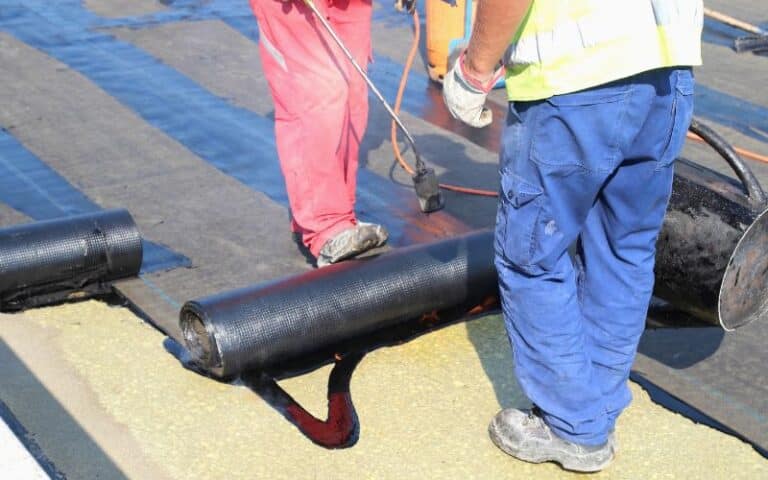A house with fresh circulating air is everyone’s desire. A plumbing vent pipe provides this serene atmosphere to stay.
Installing a vent pipe is so important that its functions can’t be over-emphasized. This article will provide all the answers you need about ABS vent pipes.
ABS vent pipe through the roof is necessary for good habitation in a home. The ABS vent pipe going through the roof is ideal for removing gas and odors.
Ready for a Roofing Quiz?
Can We Use ABS for Roof Vent?
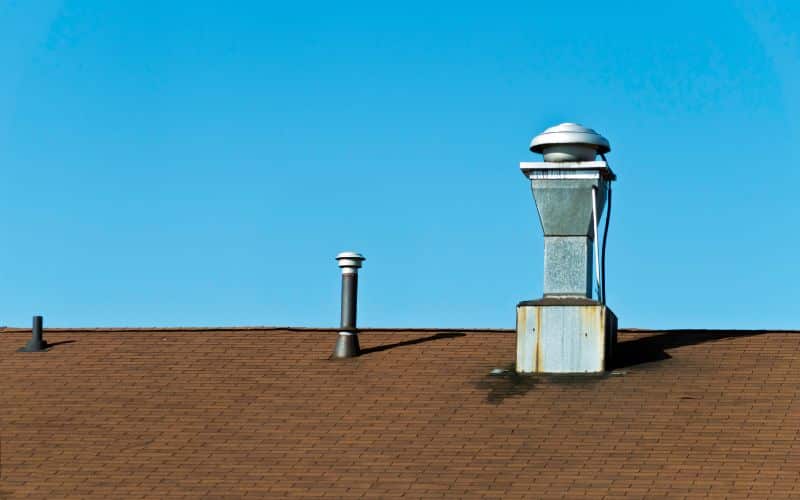
Yes, you use real solid ABS vent pipes for roof vents. There are two types of ABS vent pipes.
The first type is the cellular core ABS which deteriorates when exposed to ultraviolet rays of the sun.
The other one is the real solid ABS, which is the ideal roof vent to resist the UV-radiation effect.
An ABS or acrylonitrile butadiene styrene is a black plastic pipe. ABS is a pipe strong enough to function great when used underground and in an extremely cold environment.
You can use the ABS vent pipe for indoor and outdoor plumbing. The major function of the pipe is to drain waste vents as an electrical wire insulator and sewer pipe.
The life span of ABS pipes, when used as a vent through the roof, hinges on whether it has a vent cover.
The vent cover provides a shade for the vent pipe above the shingles and prevents the entry of dirt and dead leaves.
How to Plumb ABS Vent Pipe Through Roof?
Before considering plumbing the ABS vent pipe through the roof, you understand the connection of your pipes.
The vent provides the air that replaces the drained water. When water drains from you, air initially replaces the space taken up by the water.
You prepare when trying to pass a vent pipe through your roof. If you don’t properly install the vent pipe, there might be leakage around the recently installed vent pipe.
To carefully install an ABS vent pipe through the roof, you follow the guides below:
- In your attic, you position the ABS vent pipe so that it will touch the underneath of your roof. And you use a pencil to trace around the pipe. Then you create an oval hole in your roof where you want it to exit.
- You cut through your plywood and roofing material, following your outline with your reciprocating saw.
- You use tape to measure the length of your roof shoe.
- Using a ladder, you climb onto the roof. You loosen the shingles above the hole you cut.
- You lift the shingles at that side and slide the roof shoe under them.
- You should have individual help in the attic, sliding the vent pipe up through the roof shoe from below. The pipe should be at least 12 inches above your roof surface.
- Using roofing nails, you can now nail the roof shoe to your roof’s plywood sheathing. You also nail down the shingles you’ve loosened.
- Finally, you can connect the vent pipe to its designated piping system.
ABS Vent Pipe Through Roof Problems
The ABS vent pipe through the roof is associated with some problems. These problems manifest if you have clogged the pipe.
With materials leading to the inhibition of gases from the vent. Examples of the clogging materials could be:
- It is decaying organic matter like animals and insects, mushrooms growing on your rooftop from places like North America. Because in North America, it is wet almost throughout, hence the growth of mushrooms on your roof.
- The clogging occurs in the presence of debris like leaves, bird nests, and branches.
- Ice from snow will accumulate when you poorly install your roof’s gutters. The ice could build up and then clog the vent.
ABS vent pipe through roof problems occurs when the vent pipe doesn’t extend beyond the roof surface.
Normally, the vent pipe should be at least 12 inches above the roof surface.
When the vent pipe is at the same level as the roof, rainwater will flow back into your room following the drain lines.
Because of this flow, the backflow of water into the drain may cause a terrible odor in your home.
The backflow of water could also have health hazards because water seeping back creates an environment for mold growth, mostly in the attic areas.
A crushed or damaged ABS vent pipe is another problem vent through the roof could encounter.
The crushed nature of the pipe could lead to blockage of the pipe with no way gases can escape from your drain lines through the roof and out of the building.
This problem will lead to an indoor gas leak that could jeopardize our health.
How to Cap ABS Vent Pipe Over Roof?
There are many different cap types for a vent pipe over the roof. You install the ABS vent caps to prevent water and other debris from gaining access to your house.
You install the cap of the ABS vent pipe over the roof by following the guide below:
- The nails holding the ABS vent pipe flashing, you remove. Afterward, you use a putty knife to lift the shingles from the edge. On the shingles, you remove the roofing nail using a ply bar.
- Under the corner of the flashing, you insert the knife to protect the shingles.
- From the vent, you carefully pull the flashing out.
- Covering the pipe opening, you cut a piece of a roofing membrane with a knife. When cropping the roofing membrane edges, the ABS vent pipe flashing will overlap by one inch.
- You seal the ABS vent pipe by running a bead of silicone caulk along the top edge.
- To stretch the neoprene rubber’s opening, you use your hands. The stretching of the rubber makes it fit.
- Using the silicone caulk around the interior of the rubber gasket opening, you slide it in your hands to make it hold.
- For the already loose shingles, you run a bead of silicone. The bead of silicone is to enhance the adherence of the shingles.
- Flashing off the roof, you drive a nail one inch from the corner.
- Where they overlap, you put a nail to the shingles.
ABS Vent Pipe Size for Roof
ABS vent pipe comes in different sizes for different purposes. The ABS vent pipe could come either as ABS schedule 40 sizes or ABS schedule 80 sizes, respectively, with their dimensions.
The table below shows some of the different sizes in the 40 and 80 schedule and their dimensions:
ABS Schedule 40 Sizes and Dimensions-
| Nominal Pipe Sizes | Outer Dimensions (O. D). | Average Inner Dimensions (I.D). |
|---|---|---|
| ¼ inch | 0.54 | 0.344 |
| ⅜ inch | 0.675 | 0.473 |
| ½ inch | 0.84 | 0.602 |
| ⅛ inch | 0.405 | 0.249 |
| ¾ inch | 1.05 | 0.804 |
| 1 inch | 1.315 | 1.029 |
| 1-¼ inch | 1.66 | 1.36 |
| 1-½ inches | 1.9 | 1.59 |
| 3 inches | 3.5 | 3.042 |
| 4 inches | 4.5 | 3.998 |
ABS Schedule 80 Sizes and Dimensions-
| Nominal Pipe Sizes | Outer Dimensions (O. D). | Average Inner Dimensions (I.D). |
|---|---|---|
| ½ inch | 0.84 | 0.526 |
| 1 inch | 1.315 | 0.936 |
| 1-½ inches | 1.9 | 1.476 |
| 2 inches | 2.375 | 1.913 |
| 2-½ inches | 2.875 | 2.29 |
| 3 inches | 3.5 | 2.864 |
| 3-½ inches | 4 | 3.326 |
| 4 inches | 4.5 | 3.786 |
Conclusion
ABS vent pipe through the roof is necessary for good habitation in a home. The ABS vent pipe going through the roof is ideal for removing gas and odors.
There are two types of ABS vent pipes. The cellular core ABS and the real solid ABS are ideal for venting through the roof to resist the effect of the UV-radiation.


